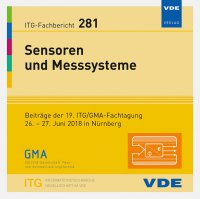Development of a cylinder pressure sensor using highly-sensitive chromium thin-films and direct contacting by laser welding
Conference: Sensoren und Messsysteme - 19. ITG/GMA-Fachtagung
06/26/2018 - 06/27/2018 at Nürnberg, Deutschland
Proceedings: Sensoren und Messsysteme
Pages: 4Language: englishTyp: PDF
Personal VDE Members are entitled to a 10% discount on this title
Authors:
Wachter, Dennis (ZeMA gGmbH, 66121 Saarbrücken, Germany)
Vollberg, Dennis; Schwebke, Silvan; Schultes, Guenter (HTW des Saarlandes, 66117 Saarbrücken, Germany)
Abstract:
Reduction of emissions caused by combustion engines and the most efficient usage of fuels are the objectives of many ongoing research and development projects. As a key technology, closed loop control of the combustion process based on real-time measurement of in-cylinder pressures is relied upon. Due to high temperatures in and around the combustion chamber, special requirements are placed on the cylinder pressure sensors. High vibration resistance and good long-term stability must be ensured, as well as high temporal resolution and measuring accuracy while maintaining low production costs. As part of a research project, a cylinder pressure sensor based on a highly sensitive thin film of chromium is to be developed. With a high gauge factor of up to 15 compared to other temperature-stable sensor thin films such as TiOxNy with a gauge factor of about 5, a significantly increased sensitivity with good temperature stability is expected. The environmental conditions also place high demands on the electrical contacts of the sensor element. In combination with the given small geometry and the required low production costs, this represents a special challenge. Likewise, high reliability and long-term stability through a robust design are in the foreground. For the manufacturing of the sensor prototypes, an experimental laser welding is tested in which an approximately 150 µm thick wire is welded onto a thin film layer of about 150 nm thickness waiving additives such as solder. On the basis of the available data, the contacting method seems to be suitable in the case in question, although no data is available for a longer period of time at the time of submission. Five different pressure sensor variants were manufactured, which differ mainly in the measuring structures used and the tempering of the sensor elements. The temperature range of 150 °C to 200 °C of the sensor in an engine test bench was determined by means of FEM simulation and subsequent experimental verification. Sensors have been manufactured and tested successfully, while some interesting temperature dependent characteristics are discussed.


